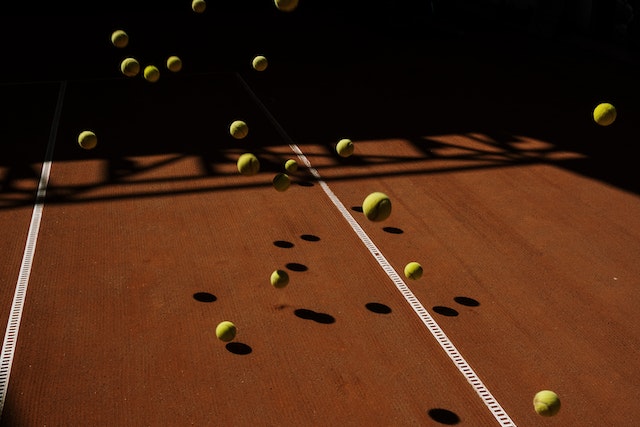
Why do some things bounce and other things don’t? Things that bounce have more elasticity than things that don’t bounce.
For something to bounce, it has to has to have kinetic energy. It then has to transfer this kinetic energy to internal energy and then back to kinetic energy without losing any energy in the process. Let’s look at two different objects to see if they bounce or not. Let’s look at a rubber ball and a mobile phone.
If you hold a rubber ball and a mobile phone at shoulder height (about 1.5 m above the ground) and drop them, they both have kinetic energy. Kinetic energy is the energy given to an object to make it move. If you throw a ball, the kinetic energy comes from the force you put in to make the ball move. When you drop something, the kinetic energy comes from gravity. All objects have gravitational potential energy because everything on Earth is constantly being pulled by gravity. When you release the ball and the mobile phone, their gravitational potential energy becomes kinetic energy.
The ball and the mobile phone fall and then hit the floor. This is where the difference becomes apparent. The rubber in the ball is very elastic. That means it wants to return to its original shape after it has been deformed by a stress. This happens because of the way the rubber is constructed. It is made up of polymers that are long chains of atoms. These chains are very long and become tangled up. The polymer chains can be lengthened or compressed by adding a force, but they return to their original shape when the force is removed.
When the ball hits the floor, the force of gravity is countered by the upward force of the floor. The two forces oppose each other and the ball is deformed between them. The kinetic energy goes into stretching or compressing all of the polymers in the ball as it deforms. Some of the energy is lost as heat, but a lot of the energy stays in the polymers, stored as elastic energy. The ball continues to deform until the force pressing down and the force pressing up equal each other. At this point, the polymers return to their original shape, releasing the energy in the opposite direction, against the ground. As Newton’s 3rd Law says, “with every action in nature there is an equal and opposite reaction,” and the energy pushing against the floor makes the ball go up again. This is the bounce. Because some of the energy is lost to the ground and some of the energy is lost to heat, the ball doesn’t bounce back to the same height and more energy will be lost with each impact until the ball comes to rest.
When the mobile phone hits the floor, it doesn’t have the same elastic property as the ball. The kinetic energy that the phone has must go somewhere. Some of the energy is transferred into the floor, but the rest of the energy has to be dissipated and quickly. The energy passes through all of the atoms and makes them vibrate. If the object is strong, it might be able to withstand the vibrations without any damage. If the object is made of a material that isn’t as strong, the vibrations may tear the material apart. The mobile phone will also have joints and places of weakness where the vibrations could break the phone.
All of this being said, rubber balls don’t always bounce. They need to hit a surface that is hard enough for them to come to a complete stop very quickly. This allows them to deform and the energy to be stored as elastic energy. If the rubber ball lands on a soft carpet, the carpet compresses and slows the ball gradually rather than quickly. This gives more time for the ball to lose its energy to the carpet.
If you can compress a rubber ball so that it is denser, Rubber balls are not the only things that bounce. A glass ball and a steel ball will also bounce. In fact, a steel ball will bounce higher than a rubber ball, so long as it is bouncing on a steel surface. The principle is the same as with the rubber ball, but the steel doesn’t compress as much and is able to store much more energy internally. The steel releases the energy with almost no loss and will bounce back up to nearly the height it was dropped from. However, the steel ball needs to be dropped on a steel surface for this to happen. If you drop it on concrete or another surface, the surface will not be hard enough to push back on the steel ball and a lot of the ball’s energy will be lost to the surface, putting a hole in it. And this is what I learned today.
Sources
http://scienceline.ucsb.edu/getkey.php?key=4384
https://van.physics.illinois.edu/ask/listing/111
https://howthingsfly.si.edu/ask-an-explainer/what-gravitational-potential-energy
https://www.exploratorium.edu/sports/ball_bounces/ballbounces2.html
https://physics.stackexchange.com/questions/398476/why-dont-all-objects-bounce-like-rubber-balls
